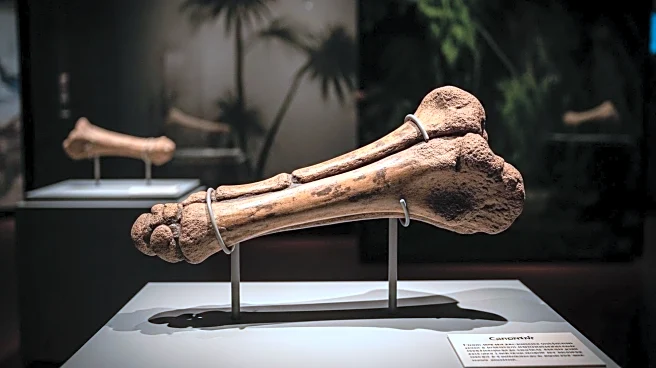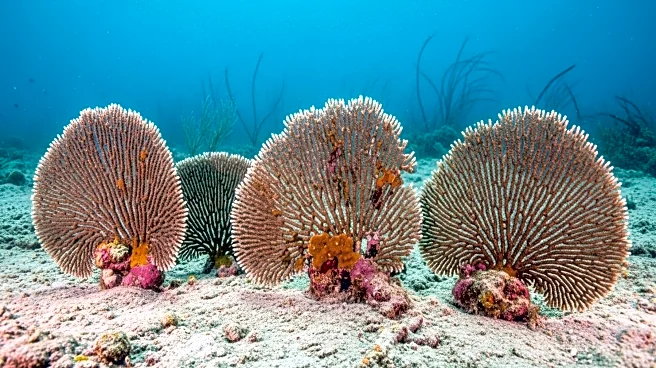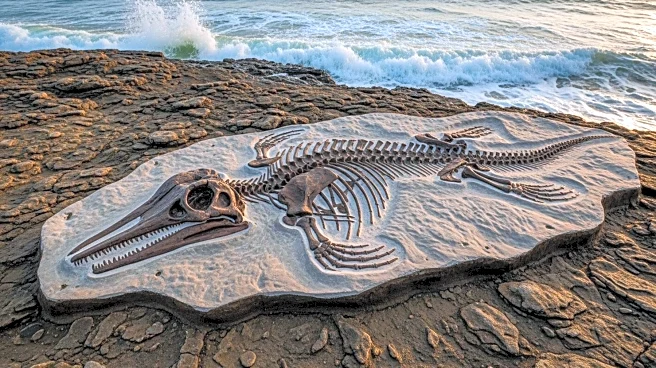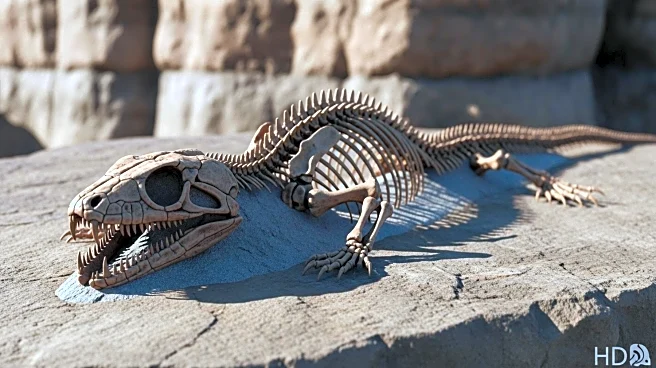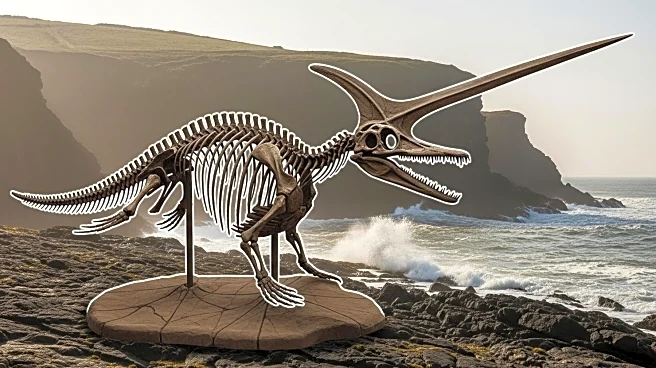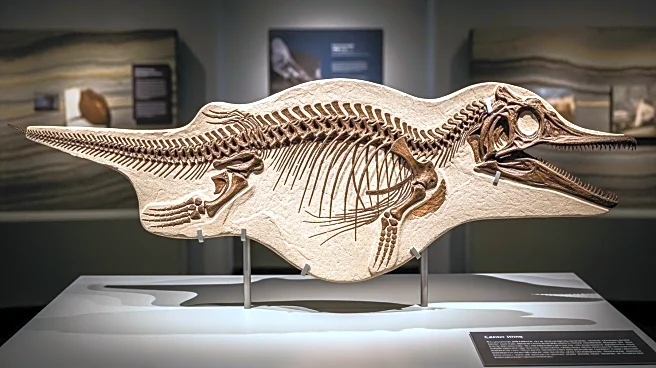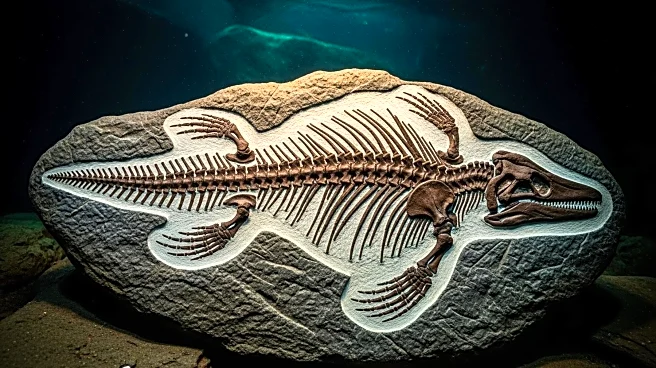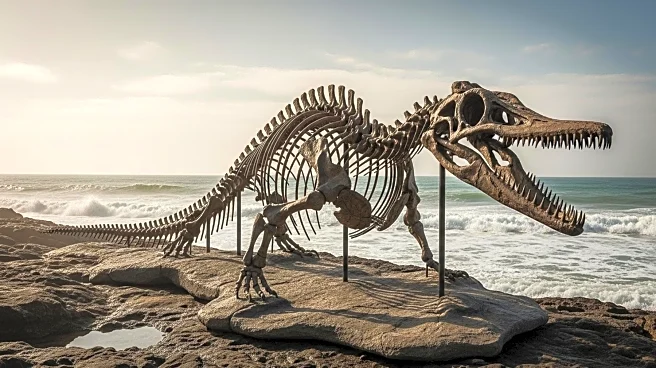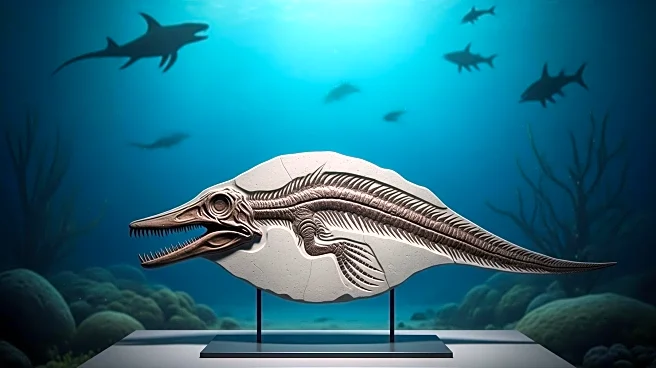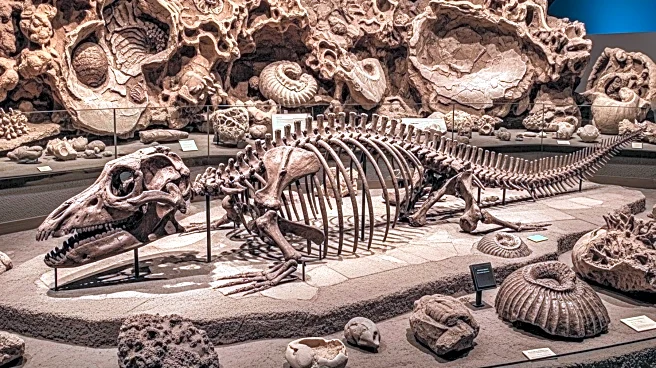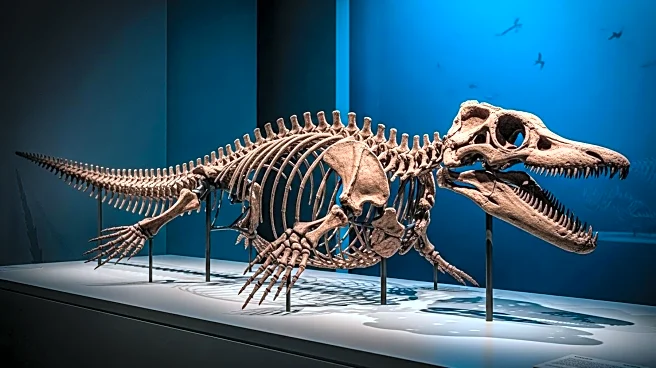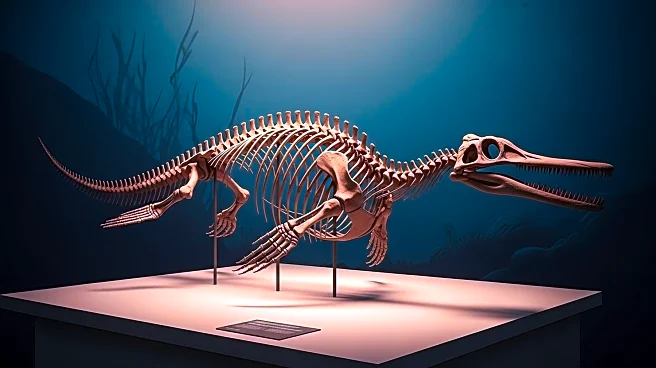What is the story about?
What's Happening?
Archaeologists have uncovered a leg bone fragment from a massive flightless predator known as a 'terror bird' in central Colombia, dating back 12 million years to the Miocene epoch. The discovery, led by Federico J. Degrange and Siobhán Cooke, Ph.D., provides insight into the ancient ecosystems of northern South America. The fossil, found in the Tatacoa Desert, indicates that these birds were top predators, equipped with heavy, hooked beaks and powerful legs for speed. The bone fragment, identified as the distal end of a left tibiotarsus, shows evidence of interactions with other predators, such as the giant caiman Purussaurus. This finding expands the known range of terror birds, previously thought to be limited to the Southern Cone, and highlights their role in shaping the food webs of the Cenozoic era.
Why It's Important?
The discovery of the terror bird fossil in Colombia is significant as it reshapes the understanding of Miocene ecosystems in northern South America. These birds were apex predators, influencing the behavior and evolution of other species in the region. The presence of terror birds in tropical lowlands suggests a broader geographic range than previously known, indicating diverse and complex food webs. This finding also provides valuable data for reconstructing ancient environments, offering insights into predator-prey dynamics and ecosystem interactions. The study underscores the importance of local collections and modern imaging techniques in paleontological research, potentially leading to further discoveries from existing fossil collections.
What's Next?
The study of the terror bird fossil may prompt further research into the Miocene ecosystems of South America, particularly in regions previously underexplored. Researchers might focus on identifying additional fossils in existing collections, using advanced imaging technologies to uncover more about the biodiversity and ecological interactions of the time. This could lead to a deeper understanding of how ancient climates and habitats influenced the evolution of species. Additionally, the findings may inspire new fieldwork in areas like the Tatacoa Desert, aiming to uncover more evidence of the diverse life forms that once inhabited these regions.
Beyond the Headlines
The discovery of the terror bird fossil highlights the ethical and scientific importance of preserving and studying local fossil collections. It demonstrates how modern technology can enhance the understanding of ancient life without damaging valuable specimens. The research also raises questions about the long-term impacts of climate change and habitat shifts on biodiversity, drawing parallels between past and present ecological challenges. By examining ancient ecosystems, scientists can gain insights into the resilience and adaptability of species, informing current conservation efforts.
AI Generated Content
Do you find this article useful?
